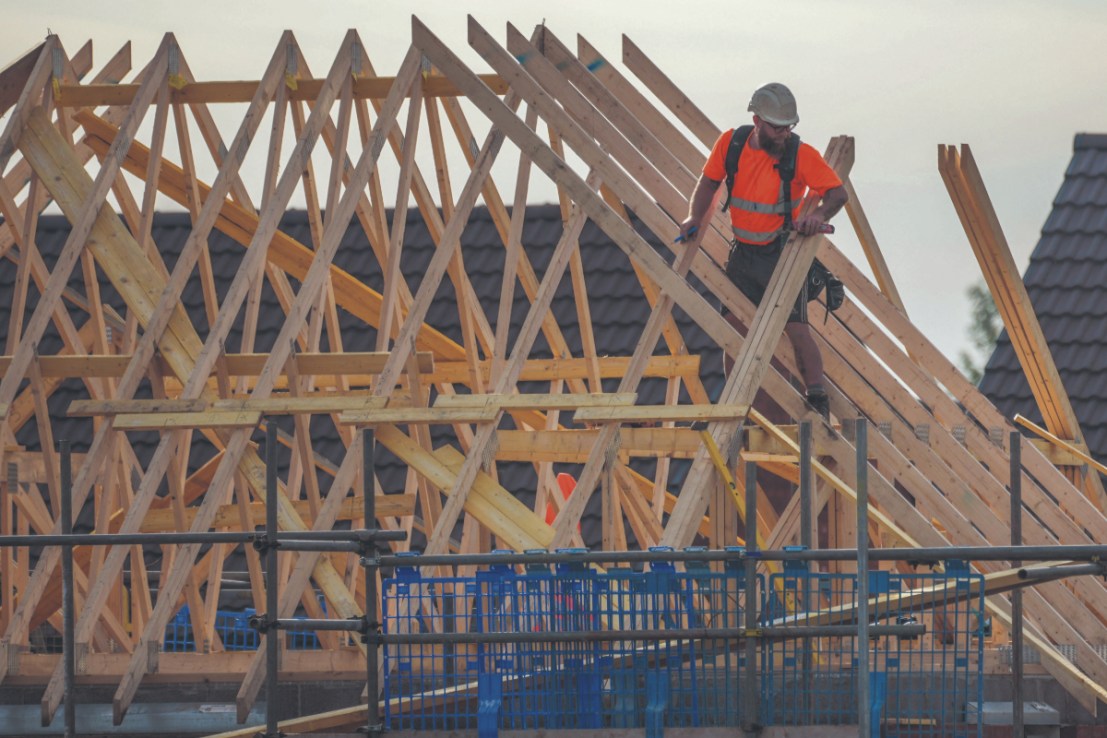Will the government’s £2bn affordable housing top-up make a difference?
The government has ploughed a ‘top-up’ investment of £2bn into the UK’s affordable housing sector as part of its pledge to revitalise residential construction. Officials say it will get working people and families into secure homes, while detractors say it doesn’t go far enough and might even be less money than the sector had anticipated. [...]


The government has ploughed a ‘top-up’ investment of £2bn into the UK’s affordable housing sector as part of its pledge to revitalise residential construction.
Officials say it will get working people and families into secure homes, while detractors say it doesn’t go far enough and might even be less money than the sector had anticipated.
Critics say that the £2bn pledged is less than the previously-planned investment from the last government.
The last government promised £11.5bn for the Affordable House Programme (AHP) for 2021-2025, equal to £2.3bn per year.
But this is the third top up the Government has made to its affordable homes pot this year, having commited £500m in October and £350m in February.
The most recent announcement takes the total amount pledged for 2025/26 to £2.85bn.
It also precedes the government’s Spending Review on 11 June, which is set to feature details of a new, multi-year AHP to replace the existing scheme.
The next planned stage of funding will be for 2026/27.
‘Welcome and vital’
The UK’s housing crisis has a number of different causes. Having made inroads in addressing the planning problem with its Planning and Infrastructure Bill, this money will help to improve supply-side financial constraints.
“This additional funding is very much welcome and needed especially given the huge viability challenges many affordable housing developers are facing, which is stymying the delivery of much-needed new housing,” Olivia Harris, Chief Executive, Dolphin Living, said.
“This is especially so in places like London where start-on-sites are at near record lows while demand continues to accelerate away.”
Affordable housebuilding has suffered from a pullback of government funding, with government grants per housing unit falling from 16.5 per cent of total housing costs in 1979 to 11.5 per cent in 2019–2020, according to the Tony Blair institute.
Builders often struggle with a large viability gap, as they come up against the incompatible goals of building affordable homes and turning a profit.
Heather Powell, Head of Property at Blick Rothenberg, said: “Over 40% of affordable housing is delivered through S106 agreements. However, a lack of funding available to Social Housing providers means these many schemes are being held up as the developers cannot identify a operator who has the funds to purchase the affordable homes.”
She added: “If the £2billion of grant funding announced by the Government allows operators to purchase homes built in accordance with S106 agreements, it is a welcome step towards building 1.5million new homes. Funding for 18,000 new homes, even though it will only cover 1.2% of the government’s target, could unlock as many as 100,000 further new homes for sale to first time buyers and families on the open market.”
Paul Rickard, Chief Executive, Pocket Living, said: “While this is welcome news, we await further details on the allocation between London and the rest of England, especially given the crisis in housing starts in the capital and the shortage of affordable homes.
London’s housing crisis is particularly acute: Around 300,000 Londoners are on the social housing waiting list, and London boroughs spend, on average, £4m a day on temporary accommodation costs.
The sector needs long-term stability
While supportive of their funding, commentators have been united in adding in calls for long-term certainty on housebuilding from the government.
“Our big ask at this time is that the further funding due to be announced later this year is linked to a long-term funding programme that allows the sector to plan for growth in the long-term,” Ian Fletcher, policy director for real estate, said.
Pocket Living’s Rickard added that he “look[s] forward to the longer-term funding announcements and will continue to work with the government on targeted initiatives to support the SME housebuilding sector more widely before it is too late.”
Along with a lack of funding and restrictive planning, the construction sector has suffered from a lack of government certainty as housing has morphed into a political hot potato which successive governments have unsuccessfully made it their mission to solve.
Jonathan Seager, policy delivery director at BusinessLDN, said: “[Political certainty] is a real challenge… How do you create structures which give people confidence to invest and [avoid feeling like] that policy isn’t suddenly going to do a U-turn after seven years, when your scheme is going to last for 30?”
£600m for construction skills
Alongside the affordable housing money, the government announced a £600m investment in construction skills.
It aims to train 60,000 construction workers to tackle skills shortages and get more young people into jobs.
In an RSM survey, a quarter of housebuilders cited a shortage of skilled workers as the biggest barrier to meeting housebuilding targets going forward.
RSM estimated the current skills gap at 250,000, though, more than four times the number of workers the government’s investment should provide.
But industry experts were optimistic. Travis Perkins development director Andy Rayner said that the investment into training and recruitment was “not just a step in the right direction, but also a long-term commitment to the future of the industry.”
“Equipping the next generation with the right tools, training, and opportunities will help address critical gaps in the workforce, strengthen the supply chain, and support the industry in meeting ambitious build targets with greater confidence and resilience.”



